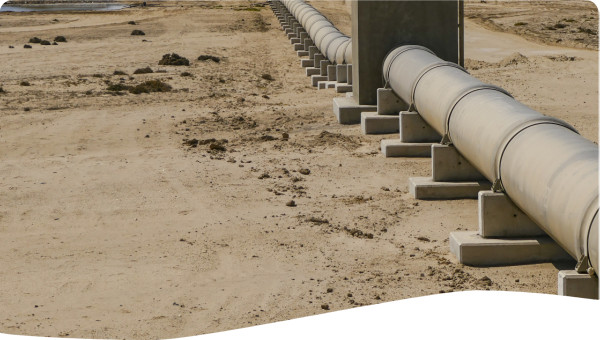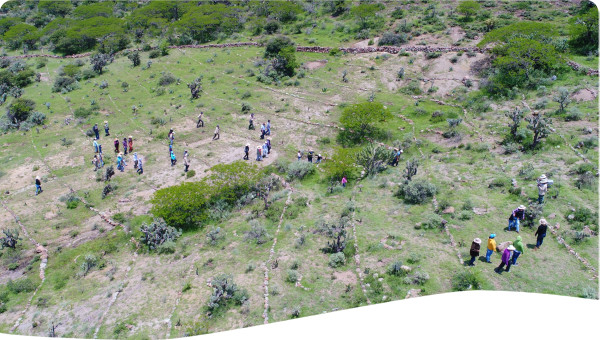For many island communities in the Philippines, potable water security has been lacking for generations. Islanders often travel long distances to the mainland to buy water and face high prices, even for collected rainwater. These expensive sources of water are also unreliable due to seasonal weather and typhoons. NXTLVL Water is one of the innovative solar-powered desalination systems that has been recently deployed. The systems are modular for rapid deployment, disaster resilient, & produce potable water for 80% cheaper than other water source.
The context for the Philippine water situation is that over 30M+ people experience potable water scarcity, with a majority of these water needy populations living in small coastal and island communities. These people are either drinking from unsafe water sources (e.g. rainwater) or spend an outsized portion of their income (often over 25% of daily income) on procuring safe drinking water. Without significant reforms and effective implementation of water sustainable programs, these communities will remain struggling with their water needs, leading to even more pressing consequences with health and economically.
The main challenge though, in the water sector is the lack of awareness and education on the risks of continuous water degradation in the country. This equates to the hesitancy of most decision-makers to explore and invest in various advanced water technologies. Funding allocation for water resource management projects is insufficient, while financing processes from financial institutions take too long to progress. Often overlooked is also the lack of coordination within involved parties in the local government or agencies pre, post and during the project activities. Red-taping considerably adds up stress and affects mobilization and in deployments.
Philippines might experience severe scarcity of groundwater in the coming years which will affect water prices and jeopardize livelihoods. More individuals, especially children, will suffer from malnutrition or waterborne diseases. Lack of modern water infrastructure makes it impossible to obtain continuous water supply for these communities. Most of the water treatment solutions are quite expensive to run using diesel generators, while also being ecologically unsustainable.
To address the above concerns, NXTLVL project took into account three critical factors which must be present in any long-term desalination solution:
- Renewables-ONLY first: all new innovations need to be powered completely with renewable energy systems (specifically solar) so that we never have to rely on a fossil fuel power supply chain and its related carbon footprint.
- Modular deployability: desalination systems should have the ability to be constructed and deployed in the most difficult of circumstances - no available power grid, no port/jetty solutions for heavy equipment or components, limited skilled construction labor force, long transportation delivery chains with lack of modern shipping. Heavy localization of components and assembly processes is also necessary to reduce reliance on imported or difficult-to-procure parts.
- Long-term survivability: any innovation needs to be able to survive against rough environmental conditions including yearly typhoons for several years with only cursory regular maintenance (aside from consumable filters). Ideally, new innovations should be able to work using solar power within one day of a typhoon passing to immediately address water needs of a community in a disaster scenario.
Focusing on sustainable innovation to address potable water needs, NXTLVL Water gained full understanding of local island water issues including which communities are most in need of potable water solutions through direct talks with provincial governors and engineering offices and speaking engagements with LGUs. Aiming to raise awareness on sustainable tech solutions, the project also conducted on-the-ground outreach campaigns to show how tapping of renewable sources of water and energy are the key to delivering permanent solutions to the potable water crises and impacting community health outcomes.
The desalination solution developed by NXTLVL Water emphasizes decentralization and modularity at small (less than 100cmpd) scales, renewable and efficient use of energy, and localized supply chains enable communities to secure long-term consistent supply of high-quality potable water all year round. NXTLVL uses solar power to run our proprietary “Hydra” systems. Combined with unique energy-saving technology in its reverse osmosis systems, savings in power and other costs compared to traditional diesel-run desalination is at 85% or more. Since the production cost is lower than usual water providers, NXTLVL is able to price the product water for as low as Php 7.00 per 5 gallon jug, which gives the product competitive advantage over 80% of other marketed solutions.
Besides, the NXTLVL Water mission has been fully aligned with the COP26 goals aiming to provide tangible solutions in Philippines along two main factors:
1) Using renewable sources ONLY to solve the potable water crises on islands communities. NXTLVL systems only use abundant seawater as source water, avoiding completely the use of rapidly depleting groundwater (aquifers) and surface water (rivers, lakes, reservoirs). NXTLVL uses solar power to treat source water into high quality potable water without the need for fossil fuels at all. And because the systems are small and decentralized, NXTLVL is also able to avoid the large distribution and logistics carbon costs as well as environmental (sea ecology) concerns associated with other centralized water treatment solutions.
2) The creation of resilient decentralized networks of water infrastructure, a large departure from the traditional goals of large, costly and slow-to-build centralized water treatment infrastructures like mega-scale desalination plants and reservoir-tapping long distribution lines. The project focus is to produce and distribute potable water as close as possible to the end-consumer to eliminate large infrastructure costs and make water more accessible to smaller and remote communities. Having a decentralized model for water infrastructure also unlocks opportunities to push the limits of disaster resilience on a system standalone basis (ie. constructing each system to survive 250kph+ winds and flooding) as well as a network basis (ie. having multiple production hubs around clusters of islands provides natural insurance of water supply should one system experience breakage).
The company’s entire engineering and project management teams are focused on finding innovative ways to reduce the carbon footprint of the technology systems through feature design, and maximizing efficient system uptime to achieve complete substitution of water from our systems over water through traditional sources which include groundwater deep wells (harmful to aquifers), potable water importation which carries long logistics supply chains, and traditional desalination which is mostly energy inefficient and powered by diesel generators. Furthermore, the team focuses on sales of solar-powered only systems despite the market preference (often due to lack of technology education) for diesel generator-powered systems.
In the Filipino province of Bohol (Visayas) where a number of “Hydra” systems have been deployed in island communities of 2,000 to 20,000 population size, residents now enjoy continuous supply of potable water. Among the residents of Pamilacan island is the 60-year old Agapita Tria, who grew up struggling to have access to clean drinking water. She had her fair share of mishaps and near-death experiences just to get her weekly supply of water to drink from the far away mainland. Over the decades, Agapita has witnessed the younger generations endure the water problems on the island, worsening by population growth and price inflation.
By partnering with local government units, the national government, and non-government groups, NXTLVL was able to decentralize water supply infrastructures, and refocus the resources to areas where potable water is scarce to none. We also work closely with private companies and individuals who are aligned in their sustainability goals through their CSR initiatives in order to promote sustainability and water security to the community. To date, NXTLVL has been able to provide over 80,000 individuals from across the Philippines (Luzon, Visayas and Mindanao regions) with non-stop year-round water supply. With continuing support coming from both government and private groups, islanders like Agapita will no longer need to cross the seas to enjoy a drink of potable water.
The feedback from beneficiaries included the following:
“I remember when we had the turnover ceremony in Pandanon, all the people were there and some of them cried. To them, the desalination plant is such a blessing, because that was the time when they saw water coming from the pipe - clean water, drinking water.” - Bohol Provincial Engineer, Camilo Gasatan
“It’s now very easy to get water because the source is the ocean and we do not use electricity, we only use solar.” - Florita Espina, Island resident
“Now we have a desalination plant, we don’t have water problems anymore, because this is now the solution.” - Crispo Valeroso, Barangay Captain
These and many other local stories have defined the impact of having easy access to water supply in a community. Through NXTLVL project, the local barangays (communities) were provided with a cheap safe potable water source, and also with an income generating system for filling & distribution of the potable water outputted by the desalination systems. This income not only covers the maintenance of the system, but also generates jobs for locals hired to operate the desalination plant and extra income for the barangay. With not just the added income but a clear daily proof point of a sustainable business model in water, NXTLVL catalysed changed behaviors within the communities, including reduced use of diesel and diesel generators for water provision and reduced reliance on inter-island movement of water to further decrease net carbon footprint.
As of the moment the project can only rely on the technical water production and quality data directly reported by their systems and updates received from the local government units where systems were deployed. So far, it has created an impact to the communities as it has lessened their burden in going back and forth to the main island to fetch their drinking water and reduced (if not eliminated) their reliance on collected rainwater. While NXTLVL project produced several levels of impact (community health outcomes, community financial savings / income from water provision, carbon footprint of water provision), the project is conducting comprehensive studies to quantify and publicly report their impact on the 80,000+ population of potential beneficiaries.
Continuous innovation is critical for reach the sustainability goals hence the project established an Innovation Hub to develop and test new sustainable solutions for NXTLVL systems. Despite limitations of desalination in terms of environmental concerns, there are endless opportunities to fulfill water demands of a community.
Having proven the system concept numerous times in the local Philippine communities, it was crucial for the project to continue working with national government programs to scale-up the solutions to more communities at regional level. These types of larger scale programs are now being pursued across two provinces in the Visayas region.
As NXTLVL introduces new technologies to communities, there is a need for consumer education on matters of potable water issues and sustainable solutions. Communities should have clear understanding of underlying technology and operations. This way people gain trust in the technology and realize the full sustainability benefits of the systems.
Aligning goals with community stakeholders is as important as having award-winning technology. The community that consumes the water, engineers who drive the project processes, and local governments who sponsor and regulate water programs are vital for project success. Without their approval, programs for water development and proliferation of sustainable solutions would likely be impossible.
 Case studies
Case studies
